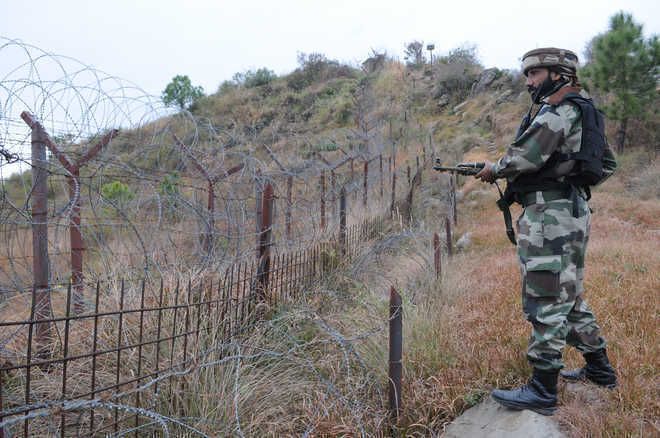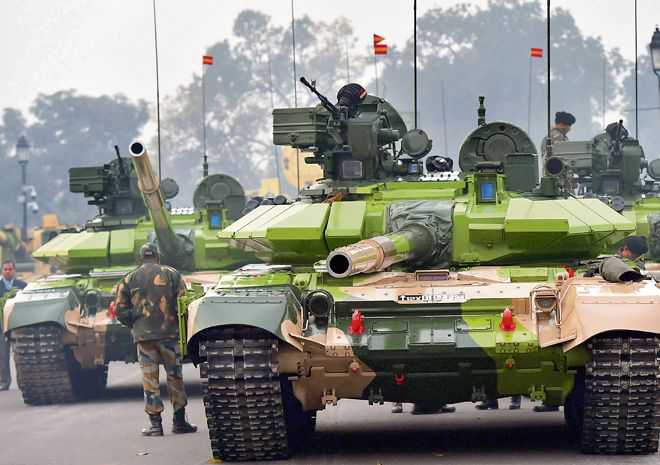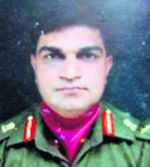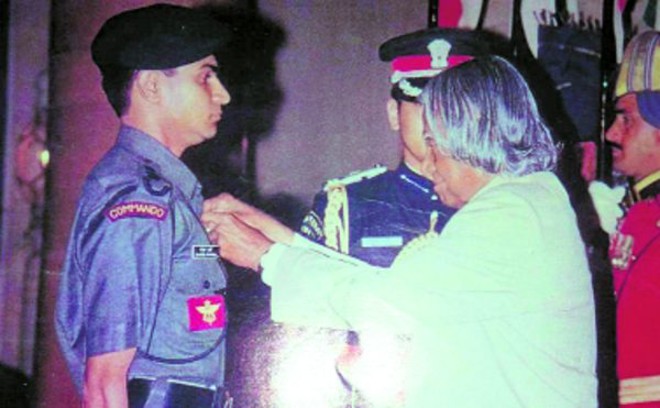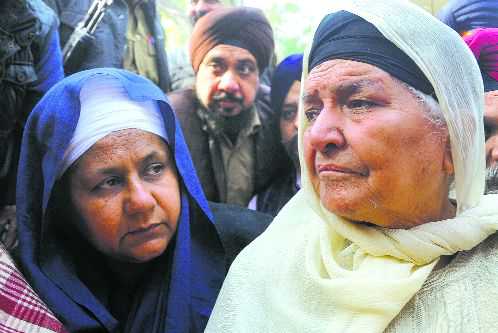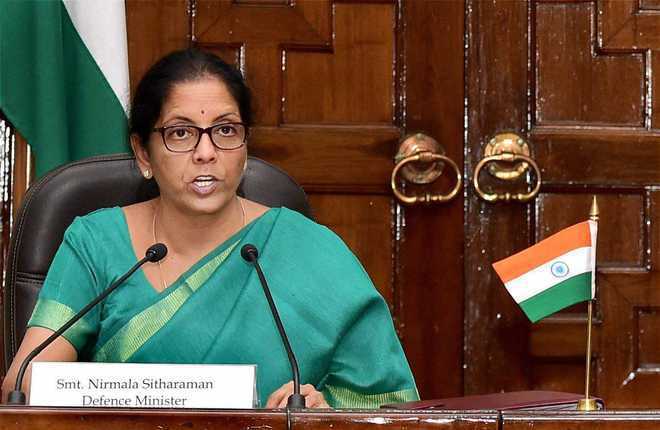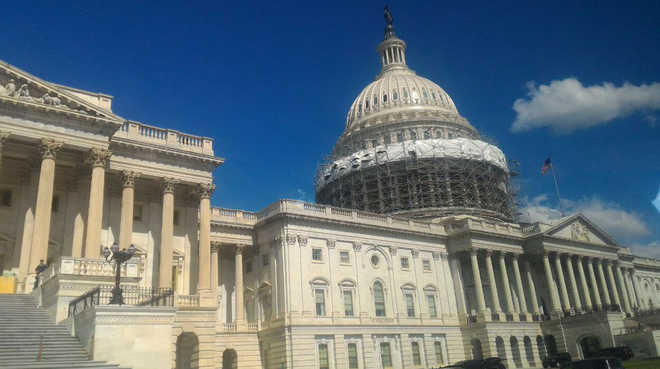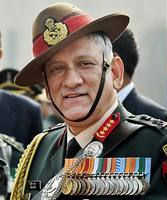
Army Chief Gen Bipin Rawat.
Tribune News Service
New Delhi, January 25
Army Chief Gen Bipin Rawat is among 19 senior Army officials who have been conferred the Param Vishisht Seva Medal (PVSM), the highest military medal awarded in recognition of peacetime services not relating to gallantry. Fifteen Lieutenant Generals and three Major Generals have been awarded the PVSM.
Two senior officers Lt Gen Surinder Singh, Western Army Commander, and Lt Gen MM Naravane, Eastern Army Commander, will be accorded the PVSM.
Besides, President Ram Nath Kovind approved one Ashoka Chakra, which is the highest gallantry award in peacetime, two Kirti Chakra, the second highest peacetime gallantry award, nine Shaurya Chakras and 109 Sena medals for the Army personnel.
The Navy personnel will be decorated with seven Nao Sena medals and the IAF with two Vayu Sena medals for gallantry.
Lance Naik Nazir Ahmad Wani will be posthumously conferred with the Ashok Chakra. The Kirti Chakra will be awarded for separate acts of bravery to Major Tushar Gauba from the Jat Regiment and Sowar Vijay Kumar, 22 Rashtriya Rifles, the latter posthumously.
On May 24 last year, Major Gauba had eliminated three terrorists. Sowar Vijay Kumar was part of the operation. He got injured, but refused evacuation and killed two terrorists.
The Shaurya Chakra awardees include Capt Abhay Sharma, 1st Battalion, Parachute Regiment. He was the party commander tasked to undertake patrolling against enemy Border Action Team along LoC in Jammu district in April last. Besides shooting down the enemy, the team also destroyed three bunkers, recovered enemy weapon and ensured safe extrication.
Lt Col Vikrant Prasher of 10 Parachute Regiment (Special Forces), Major Amit Kumar Dimri from 14 Rashtriya Rifles, Major Imliakum Keitzar from 4th Gorkha Rifles, Major Rohit Lingwal of 9th Battalion, Parachute Regiment, Capt Abhinav Kumar Choudhary from 21 Rashtriya Rifles, Lance Naik Ayyub Ali from 9th battalion of Rashtriya Rifles, Sepoy Ajay Kumar, 42nd battalion of Rashtriya Rifles, and Sapper Mahesh HN, 44th Battalion of the Rashtriya Rifles also won the Shaurya Chakra.
In the IAF, both Vayu Sena medals for gallantry are for rescue efforts during floods. Wing Commander Bhuvanendran Nair Prasanth rescued 13 college girls stranded on a rooftop. Sergeant Amit Kumar Jha has been awarded for rescuing people during cyclonic storm “Ockhi” in Kerala.
In the Navy, Commander Vijay Verma, a helicopter pilot, is on the list for Nao Sena medal for gallantry. He had rescued two pregnant women during the floods. Another naval copter pilot Commander T Anup Kumar has been awarded for another daring rescue. Another copter pilot Lt Commander Manu Mishra saved a merchant vessel from spilling its cargo of toxic chemicals into the Bay of Bengal.
Lt Gen Praveen Bakshi and Lt Gen PM Hariz, whom Gen Rawat supereseded, were conferred the PVSM in 2017
Army Chief Rawat among 19 awarded PVSM, 2 Army men conferred Kirti Chakra
New Delhi, January 25
Army Chief Gen. Bipin Rawat is among 19 senior Army officials who have been conferred the Param Vishisht Seva Medal, the highest military medal awarded in recognition of peace-time services not relating to gallantry.
Almost all commanders who became Army Chief in the past four decades had been decorated with the award before their appointment to the top post, according to defence experts.
Fifteen lieutenant generals and three major generals have also been awarded the Param Vishisht Seva Medal (PVSM).
The defence ministry also announced Kirti Chakra—India’s second highest peacetime gallantry award—for Major Tushar Gauba from the Jat Regiment and Sowar Vijay Kumar ((posthumously)) from 22 Rashtriya Rifles.
Nine Army men have been awarded Shaurya Chakra, the third highest peacetime gallantry award after the Ashoka Chakra and the Kirti Chakra.
Major Gauba has been given the award for displaying “unparallel bravery” while dealing with a group of terrorists along the Line of Control in Kupwara district of Jammu and Kashmir in May last year.
Army officials said he crawled up to 20 metres close to the terrorists under heavy firing and then lobbed a hand grenade. Showing utter disregard to his personal safety, he charged on the terrorists with his weapon.
“In close combat undeterred by the terrorists’ fire, he killed three militants. His act of unparallel bravery under heavy terrorist fire, tactical acumen and swift action resulted in elimination of three hardcore terrorists,” said an Army official.
About Vijay Kumar, Army officials said he was deployed in Baramulla district of Jammu and Kashmir as part of “Operation Vijay Darsu” on August 2-3 last year.
During the operation, Kumar came under heavy fire from a group of heavily armed terrorists. However, despite being injured after killing one terrorist, he refused evacuation and went ahead to eliminate another in hand to hand combat.
He has been posthumously awarded the Kirti Chakra for displaying “indomitable raw courage and exemplary bravery beyond the call of duty”.
The Shaurya Chakra awardees included Lieutenant Colonel Vikrant Prasher of 10 Parachute Regiment (Special Forces), Major Amit Kumar Dimri from 14 Rashtriya Rifles, Major Imliakum Keitzar from 4th Gorkha Rifles, Major Rohit Lingwal of 9th battalion, Parachute Regiment and Captain Abhay Sharma, first battalion, Parachute Regiment, according to the defence ministry.
Captain Abhinav Kumar Choudhary from 21 Rashtriya Rifles, Lance Naik Ayyub Ali from 9th battalion of Rashtriya Rifles, Sepoy Ajay Kumar, 42ndbattalion of Rashtriya Rifles and Sapper Mahesh HN, 44th battalion of the Rashtriya Rifles also won the Shaurya Chakra.
Three lieutenant generals were chosen for Uttam Yudh Seva Medal while 32 army personnel have been conferred with Ati Vishisht Seva medal and nine with Yudh Seva medal.
According to the defence ministry, 103 Army personnel were awarded the Sena Medal (gallantry), 74 were given Vishisht Seva medal and 35 Army personnel were selected for Sena Medal (distinguished). PTI






















































